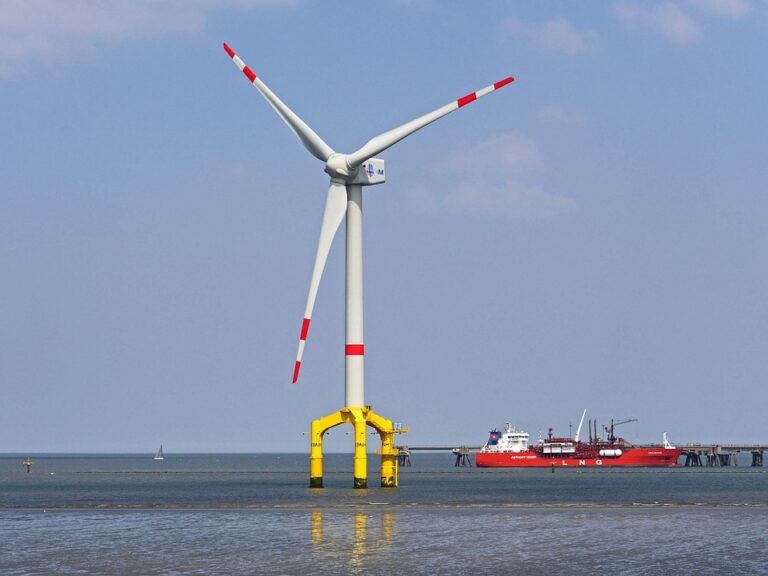Project Description
The project aims to reduce the carbon footprint of decommissioning composite structures by repurposing the fibre-reinforced plastic (FRP), the waste from wind turbine blades, aeroplane wings and GRP (glass-reinforced plastic) boats. This helps environmental management, mitigation of climate change and reduction of greenhouse gases and emissions, all are in line with NERC’s remit and Quadrat’s objectives. The marine FRP waste disposal and assessing the impact on the marine ecosystems is timely. A particular focus of the project is to explore and quantify the positive impacts of the reuse of the FRP on the marine ecosystem by reducing carbon emissions. This waste management not only improves further development of the marine renewable industries by providing relatively cheap recycled material but also helps marine ecosystems by reducing the release of waste in the environment. Also, this project improves the sustainability of decommissioning by ensuring that the energy used to develop components will be utilized fully at the end of their life while reducing greenhouse gases and emissions. This will mitigate climate issues and help decarbonisation by reducing the carbon footprint and having a more sustainable process. As the early wind farms are coming to the end of their fatigue design life, decommissioning sustainably is about to become a significant problem. The objective of this research is to investigate the recycling opportunities and find suitable and sustainable solutions to reuse the hundreds of thousands of tons of FRP waste from the wind and marine industries. By 2050, global annual blade waste will reach 2.9 Mt, with 43 Mt of cumulative blade waste. Also, the problem of end-of-life FRP boat disposal and management has taken global proportions with an increasing number of vessels needing management. At present the disposal options are burning the resin matrix to separate from the reinforcement, cutting to produce granular waste and burying in the landfill. All have significant energy and environmental consequences. This project will complement the re-purposing of FRP waste for land-based applications. With sustainability at the forefront of governmental agendas directed towards a greener, carbon-neutral future, a sustainable decommissioning plan must be put in place to promote a circular economy and reduce the levels of waste going to landfill. In the next decade, there will be a considerable number of wind farms reaching their End-of-Service-Life (EoSL) with thousands of tonnes of waste being created and needing to be managed. To mitigate climate change and enhance the decarbonisation agenda, the reuse of marine industries’ composite waste can be reused to further develop the marine renewable energy industries, in line with governmental policies and global research objectives. The reuse of FRP for reinforcing cross-laminated timber and the use of chopped FRP in a low pH concrete are other alternative solutions that would be investigated in the project. Such reuse would displace the use of virgin materials and reduce carbon emissions associated with refinement and production. This is in line with Quadrat’s research theme “mitigation of climate change”. In this project, the carbon footprint of repurposing composite will be evaluated and sustainable decommissioning will be proposed. FRP reuse would offer the potential to enhance the structural capacity, broadening the use case or allowing existing load carry capacity to be maintained with lower material usage. Reused FRP low pH composites offer the potential for enhanced service life (particularly for marine installations), thus reducing the overall flow of materials through the marine energy industry and hence positive effects on the climate, circular economy and marine ecosystem.
CANDIDATE BACKGROUND
The applicant will have Meng or BSc degree in Marine Science, Mechanical, Civil and/or Environmental Science. It is desirable that the applicant has a background in offshore renewable energy and marine industry. MSc is desirable. Carried out projects, dissertations and theses in the field of environmental and marine engineering is an advantage.
Image by Erich Westendarp from pixabay.com
Supervisors
Madjid KarimiradPrimary Supervisor: | Profile: Madjid Karimirad Email: madjid.karimirad@qub.ac.uk Institution: Queen's University, Belfast Department/School: School of Natural and Built Environment |
Astley HastingsSecondary Supervisor: | Profile: Astley Hastings Email: astley.hastings@abdn.ac.uk Institution: University of Aberdeen Department/School: School of Biological Sciences |
Additional Supervisor: | Dr Daniel McPolin, Queen’s University Belfast, Natural and Built Environment Email: d.mcpolin@qub.ac.uk |
References
Siemens (2018) A Clean Energy Solution – from Cradle to Grave. Spain: Siemens Gamesa Renewable Energy.
Bank L, Arias F, Yazdanbakhsh A, Gentry T, Al-Haddad T, Chen J, et al. (2018) Concepts for Reusing Composite Materials from Decommissioned Wind Turbine Blades in Affordable Housing. Recycling 3(1): 3-0.
Martínez, E., Sanz, F., Pellegrini, S., Jiménez, E. and Blanco, J., 2009. Life-cycle assessment of a 2-MW rated power wind turbine: CML method. The International Journal of Life Cycle Assessment, 14(1), p.52.
Eva Topham and David McMillan (2017), Sustainable decommissioning of an offshore wind farm, Renewable Energy, Volume 102, Part B, March 2017, Pages 470-480
Ellen MacArthur Foundation, Completing the Picture: How the Circular, Economy Tackles Climate Change (2019), www.ellenmacarthurfoundation.org/publications
QUADRAT Themes
- earth-systems
- environmental-management






















































